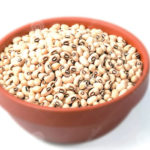Coccidiosis is a parasitic disease of the intestinal tract of animals caused by coccidian protozoa.
The disease spreads from one animal to another by contact with infected feces or ingestion of infected tissue. Diarrhoea, which may become bloody in severe cases, is the primary symptom. Most animals infected with coccidia are asymptomatic, but young or immunocompromised animals may suffer severe symptoms and death.
While coccidia can infect a wide variety of animals, including humans, birds, and livestock, they are usually species-specific. One well-known exception is toxoplasmosis caused by Toxoplasma gondii.
Coccidiosis is a significant disease for chickens, especially affecting the young chicks. It can be fatal or leave the bird with compromised digestion. There are chick feed mixes that contain a coccidiostat to manage exposure levels and control disease. In an outbreak, coccidiocidal medications are given. Examples are toltrazuril (Baycox) or amprolium. After multiple infections, surviving chickens become resistant to the coccidia.
The disease is caused by the Eimeria species, such as Eimeria necatrix, E. tenella, E. acervulina, E. maxima, etc. These organisms and other species of Eimeria bring about chronic intestinal coccidiosis. Chickens are infected with coccidiosis after picking up oocysts from the ground or from their litter. These oocysts are usually passed out from other infected birds that might have recovered from the condition, and they can survive in litter for several month. Because of the ruggedness of oocysts, it is very difficult to completely exclude or eradicate them from a poultry farm, especially where birds are raised in deep litter.
How do birds become infected?
Normally, most birds pass small numbers of oocysts in their droppings without apparent ill effects. Coccidiosis becomes important as a disease when animals live, or are reared, under conditions that permit the build-up of infective oocysts in the environment. The intensive rearing of domestic chickens may provide these conditions.
Young chickens pick up the infection from contaminated premises (soil, houses, utensils, etc.). These premises may have been contaminated previously by other young infected birds or by adult birds that have recovered from the condition. Wet areas around water fountains are a source of infection.
Oocysts remain viable in litter for many months. In this way, they can contaminate a farm from year to year. Oocysts are killed by freezing, extreme dryness and high temperatures.
How to Know When Chickens are Infected?
The most easily recognized clinical sign of severe cecal coccidiosis is the presence of bloody droppings. Dehydration may accompany cecal coccidiosis.
Coccidiosis caused by E. tenella first becomes noticeable at about three days after infection. Chickens droop, stop feeding, huddle together, and by the fourth day, blood begins to appear in the droppings. The greatest amount of blood appears by day five or six, and by the eighth or ninth day, the bird is either dead or on the way to recovery. Mortality is highest between the fourth and sixth days. Death may occur unexpectedly, owing to excessive blood loss. Birds that recover may develop a chronic illness as a result of a persistent cecal core. However, the core usually detaches itself by eight to ten days and is shed in the droppings.
How to Prevent Chickens from Getting Coccidiosis
A few good management practices will help control coccidiosis. Contact your veterinarian for full details.
Anticoccidial drugs mixed in the feed are used to limit high levels of infection.
Keep chicks, feed and water away from droppings.
Roost birds over wire netting if brooding arrangements make this possible.
Place water vessels on wire frames to eliminate a concentration of wet droppings, in which the chicks can walk to pick up or spread the disease.
Keep litter dry and stirred frequently. Remove wet spots and replace with dry litter.
Avoid overcrowding
If coccidiosis does break out, start treatment immediately.
How to be sure chickens have Coccidia
Diagnosis is best accomplished by postmortem examination of a representative number of birds from the flock. The location of the major lesions gives a good indication of the species of coccidia concerned.
For example, hemorrhagic lesions in the central part of the small intestine suggest E. necatrix, those in the cecum, E. tenella. Microscopic examination of the affected areas along with measuring oocysts will confirm the identification.
How to treat infected birds
Several anticoccidials are currently available. Depending on the product used, the withdrawal periods and contraindications should be strictly followed.
The emergence of drug-resistant strains of coccidia may present a major problem. Methods used to avoid the development of drug resistance include switching classes of drugs and the “shuttle program,” which is a planned switch of drug in the middle of the bird’s growing period.
Drugs or medication used for treating coccidiosis
Anticoccidia drugs include sulfa drugs, Amprolium, Quinolones, and Ionophores. There has also been record of drug-resistant strains of coccidiosis. One way to overcome these resistant strains is to switch the drug used. Also, it should be noted that some drugs are more effective for certain species of coccidian.
Bitter leaf extract as a solution
It is said that coccidiosis spead faster in intensive system of rearing but this cannot be the only reason why we free-range chickens hardly come down with coccidiosis. It is believed that the access of free range chickens to some herbs make them overcome problems with coccidiosis and other common poultry diseases. Well, the good news is that the wonder plants have been sorted out. And one of them is bitter leaf. Giving chickens bitter leaf extract in their water has been proven to take care of coccidia. You will soon find out how.
How to extract bitter leaf for coccidiosis control
I still don’t know why some people would prefer to use their hands to squeeze out the juice from bitter leaf. Here in this article, I will be explaining how I did the extraction with a kitchen blender for coccidiosis treatment.
Gather some bitter leaves. The quantity depends on the volume of juice you are hoping to get and the number of chickens you want to treat
Remove the leaves from the stem and rinse them in a bowl. Be sure to rinse properly but don’t squeeze too hard
Put the leaves in a kitchen blender and add just a little water. Just enough water to blend the leaves easily. What you need is a juice that is as thick as 5 Alive, so don’t add too much water at this stage.
Blend until the leaves are cut into tiny particles
Use a cheese cloth to sieve the juice into a container
If you have followed the process carefully, the bitter leaf extract should be as thick as 5 Alive.
Administering bitter leaf extract for coccidiosis treatment
For prevention, add 20 ml of bitter leaf extract to 1 litter of clean water
For treatment, add 30-40ml of bitter leaf extract to 1 litter of clean water
Bitter leaf extract added to chicken water will not reduce their water intake in harmful proportions.






